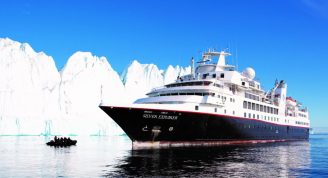Description
Join our expedition cruise through Patagonia and the Chilean fjords from Ushuaia to Valparaíso. You’ll visit remotenational parks and make approaches to both Garibaldi and Pio XI glaciers. The beginning of an adventure Begin with a night in romantic Buenos Aires before flying to Ushuaia to meet hybrid-powered ship MS Roald Amundsen. We’ll go straight into adventure mode and attempt a landing at Cape Horn. Waves from the Pacific and the Atlantic converge here, often creating challenging conditions. This fact just makes it all the more exciting if we do succeed in going ashore. You’ll then continue to the small town of Puerto Williams and we’ll try cruising into Garibaldi Fjord, a UNESCO Biosphere Reserve and home to a glacier of the same name. Patagonia’s National Parks Arriving in Puerto Natales, you may have the opportunity to join an optional excursion to the world-renowned Torres del Paine National Park. Next is Pio XI, the longest glacier in the southern hemisphere outside of Antarctica. The isolated but inviting communities of Puerto Edén and Caleta Tortel follow. Castro is a charming rustic city with access to Chiloé National Park while Niebla and its old Spanish fortress is your last stop before the vibrant hilltop city of Valparaíso.








